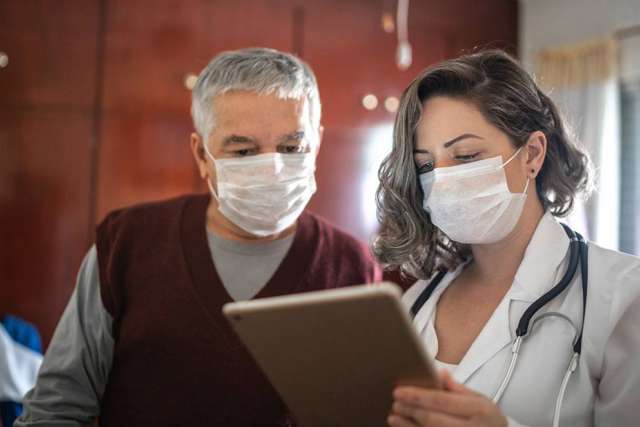Because of COVID-19, most people put regular activities on hold, including non-essential medical care. As stay-at-home orders lift, however, you may wonder if it’s time again to visit a doctor’s office or proceed with delayed surgeries.
“Everyone has their own individual comfort level and risk factors,” says Eve Glazier, MD, president of the UCLA Health Faculty Practice Group. “But we feel that it is safe and vitally important for our patients to come in and receive medical care again – everything from routine and preventive care to behavioral health, procedures and surgeries.”
UCLA Health has new policies and procedures in place to protect patients and staff from COVID-19. Here’s what is being done to create the safest environment:
Phone screening for COVID-19
The next time you call to make a medical appointment, you’ll be asked about your symptoms. If you have any that could be related to COVID-19, you may meet with your doctor over video instead of coming in for a visit. This helps protect other patients and staff from anyone who may potentially have the virus.
Virtual doctor visits
Telemedicine appointments (phone and video visits with a doctor or nurse) are becoming more popular. It’s a great way to connect with your health care provider from the comfort of home and reduce unnecessary exposure. It can also be a tool for deciding if an in-person visit is essential.
Online check-in process
You can now complete much of your pre-appointment “paperwork” online. This reduces your potential exposure in the office by minimizing physical interactions. You’ll be asked to complete patient questionnaires and submit copayments online.
In-person COVID-19 screening
You’ll be screened for COVID-19 symptoms before you enter any UCLA Health medical building. “We’ve stationed staff at all entry points to our clinics and hospitals,” says Dr. Glazier. “All patients, staff and visitors are screened for fever and infectious symptoms before they can come inside.”
If you have any signs of infection, staff will work with you on next steps. They’ll advise on testing and guide you through the best course of action to meet your individual needs.
Physical distance in waiting rooms
Traditional waiting rooms will look very different. You might be immediately brought to an exam room, guided to an outdoor seating area or asked to wait in your vehicle until called for your appointment. All of these options will adhere to physical-distancing rules.
Masks for everyone
Universal masking policies will be in place. That means everyone – patients, staff, providers and visitors – will be required to wear a mask for the duration of the medical visit.
New visitor guidelines
UCLA Health is continually evolving visitor guidelines to ensure patients and visitors are safe while allowing patients to have the support they need. Find the most up to date guidelines here: COVID-19 Visitor Guidelines. “Family members and friends are an essential aspect of healing and a crucial part of the recovery process,” Dr. Glazier says.
While in the hospital, most patients can have at least one visitor a day. Visitors should expect to have temperature and symptom screening before entering a medical building and to wear masks.
Isolation for COVID-19 patients
As is standard practice, people being treated for COVID-19 are kept separate from other patients. “Our hospitals have a special unit for our COVID-19 patients, and the doctors and staff that work in that section only care for COVID-19 patients,” reports Dr. Glazier.
All of UCLA Health’s medical practices – clinics, surgical centers, radiology, labs and hospitals – are open and practicing strict safety measures. Consult with your primary health care provider, who can best assess your risk factors and address your concerns and questions. Your provider will tell you what medical care you need now and what can wait.
“When asked by my family or patients if it is ok to go to the hospital or to see a doctor in person, I emphatically say yes,” Dr. Glazier says. “Our data shows that fewer people are coming in for management of chronic medical conditions, or even emergent issues. This is dangerous and it’s so important for people to know how rigorous our protocols are to protect their safety and promote good health.”
Learn more about doctor video visits and get the latest coronavirus information from UCLA Health.
Keep your health care on track. Right now, there are many ways to see a UCLA Health doctor—from in-office appointments to video visits. We can make the appointment that feels best for you. Book an appointment today.




